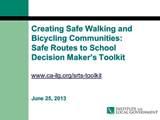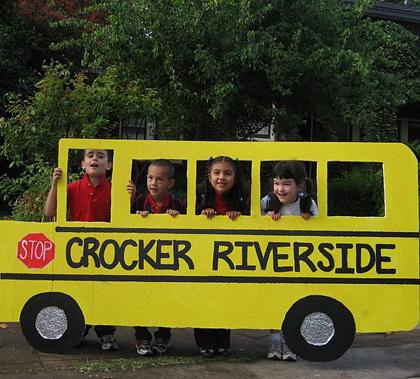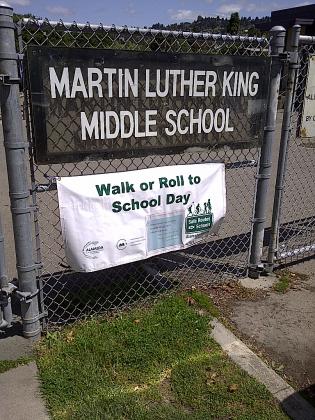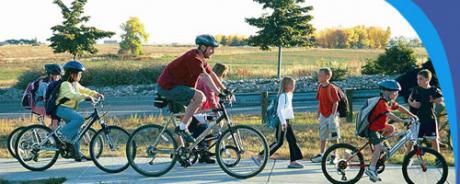There are many concerns that might lead local government leaders to care about promoting active transportation by creating safer communities for students and others to walk and bicycle to school and other destinations. These include: community safety, obesity and health issues, student achievement, busing costs, property taxes and school revenue, creating a sense of community or place, air pollution and traffic congestion.
Improve Safety
Many schools are located in neighborhoods with unsafe conditions that inhibit walking or bicycling and endanger children who use these modes of transportation. In a nationwide survey by the U.S. Center for Disease Control and Prevention, traffic-related danger was the second most common reason cited by parents for not allowing their children to walk to and from school. An active transportation planning process to create safe routes to walk and bicycle addresses real dangers through infrastructure improvements, regulations, enforcement and safety education.
Promote Health
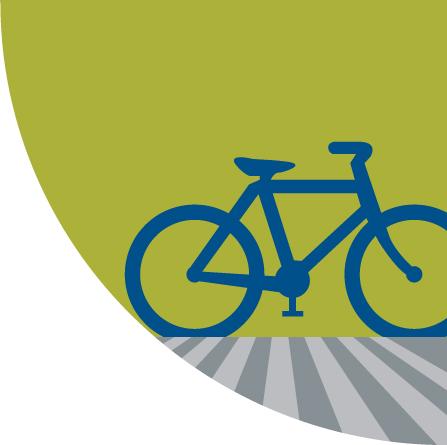 By burning calories instead of gasoline, residents combat an array of diseases caused by sedentary lifestyles. Being active has been shown to reduce the risk of type II diabetes, asthma, joint problems, heart disease and stroke. Children are suffering increased rates of health problems related to a lack of physical activity. A study (PDF) by the UCLA Center for Health Policy Research and the California Center for Public Health Advocacy found that 38 percent of California youth in fifth, seventh and ninth grades were overweight or obese in 2010. Safe routes to school and other active transportation options allow for physical activity as part of a normal daily routine.
By burning calories instead of gasoline, residents combat an array of diseases caused by sedentary lifestyles. Being active has been shown to reduce the risk of type II diabetes, asthma, joint problems, heart disease and stroke. Children are suffering increased rates of health problems related to a lack of physical activity. A study (PDF) by the UCLA Center for Health Policy Research and the California Center for Public Health Advocacy found that 38 percent of California youth in fifth, seventh and ninth grades were overweight or obese in 2010. Safe routes to school and other active transportation options allow for physical activity as part of a normal daily routine.
Increase Student Achievement
Physical activity and fitness are associated with improved cognitive functioning, stronger academic achievement, increased concentration and better test scores. Safe routes to school allow for daily activity leading to these benefits.
Reduce Busing Costs
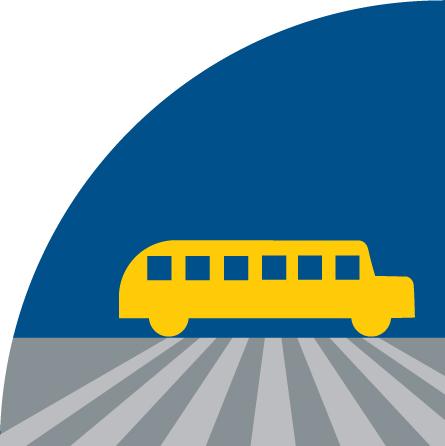 Nationwide, the cost of busing students has sky-rocketed from one billion dollars in 1976 to $20 billion by 2007. Creating safe routes can reduce the need for hazard busing, which is the practice of busing students due to unsafe walking and bicycling conditions, even when they live near a school. The California Department of Education provides data of the annual cost of busing throughout the state (bottom of this page).
Nationwide, the cost of busing students has sky-rocketed from one billion dollars in 1976 to $20 billion by 2007. Creating safe routes can reduce the need for hazard busing, which is the practice of busing students due to unsafe walking and bicycling conditions, even when they live near a school. The California Department of Education provides data of the annual cost of busing throughout the state (bottom of this page).
Gain Tax Benefits
Recent studies conclude that real estate values can be 30 percent higher in walkable neighborhoods. This translates to higher tax revenues and local purchases. Walking and bicycling to school can improve academic performance by children. Schools with higher academic achievement increase local property values and attract new residents to the area.
Discover Other Economic Benefits
For schools, healthier students mean increased average daily attendance reimbursements and reduced indirect costs of administering prescriptions and serving children who are ill, fatigued or anxious from the social costs of obesity. For counties, these benefits can also reduce the long-term demands on public health resources.
Create Social Benefits
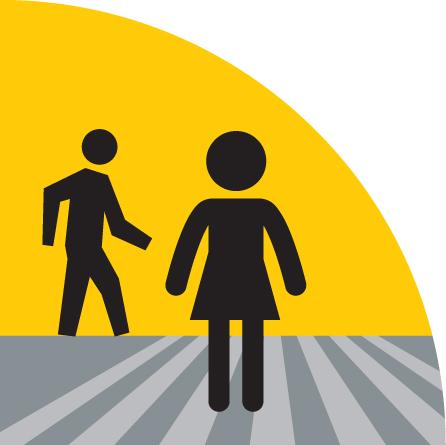 Neighborhoods with high pedestrian activity build social cohesion and create “eyes on the street” to discourage crime. Active transportation planning processes, such as walkability and bikeability audits, provide an opportunity for residents to work together and take shared ownership of their neighborhood. Common safe routes to school strategies, such as a “walking school bus” give neighbors a reason to continue interacting after the planning process is completed.
Neighborhoods with high pedestrian activity build social cohesion and create “eyes on the street” to discourage crime. Active transportation planning processes, such as walkability and bikeability audits, provide an opportunity for residents to work together and take shared ownership of their neighborhood. Common safe routes to school strategies, such as a “walking school bus” give neighbors a reason to continue interacting after the planning process is completed.
Meet Clean Air Goals
In California, by reducing vehicular miles traveled through greater walking and bicycling, cities and counties contribute to the goals of AB 32 and SB 375 to reduce greenhouse emissions. Trips taken by parents dropping children off to school adds significantly to the vehicular miles traveled and the time spent with cars idling, both of which contribute to green house gas emissions.
Reduce Traffic Congestion
Reducing traffic congestion also improves the levels of service on nearby roadways and improves air quality for everyone living, working and learning at or near the school. Traffic congestion can be significantly reduced around schools and throughout the community if shorter trips are accomplished by walking or bicycling.
 Menu
Menu





